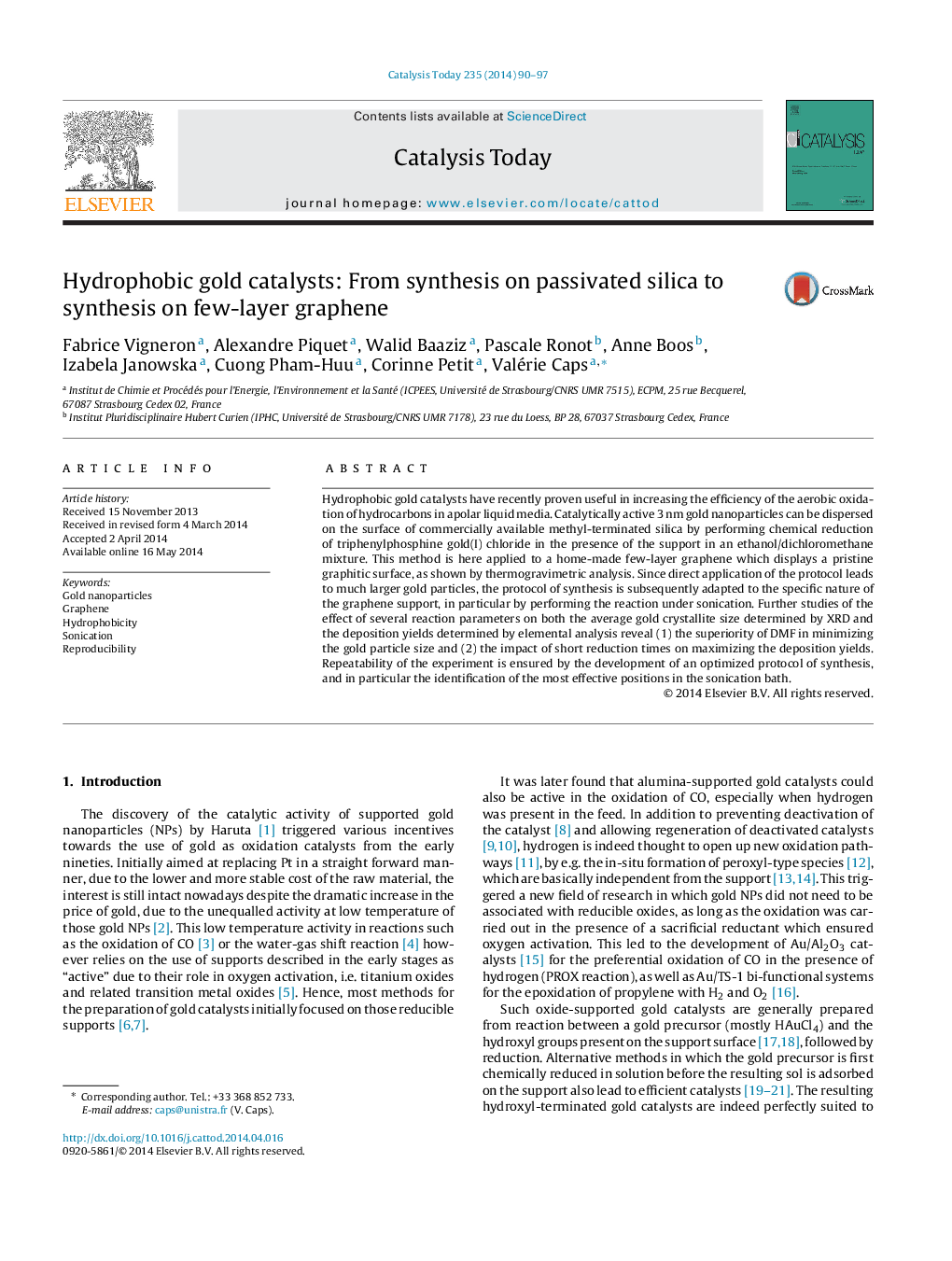| کد مقاله | کد نشریه | سال انتشار | مقاله انگلیسی | نسخه تمام متن |
|---|---|---|---|---|
| 54680 | 47020 | 2014 | 8 صفحه PDF | دانلود رایگان |
• Gold nanoparticles are produced at the pristine graphitic surface of few-layer graphene.
• Synthesis is achieved by reduction of AuPPh3Cl within a sonicated dispersion of FLG.
• DMF as reaction solvent gives the smallest gold crystallites of 6.4 nm on average.
• The gold loading can be maximized by shortening the sonication time after reduction.
• Reproducibility is ensured by an optimized protocol of synthesis.
Hydrophobic gold catalysts have recently proven useful in increasing the efficiency of the aerobic oxidation of hydrocarbons in apolar liquid media. Catalytically active 3 nm gold nanoparticles can be dispersed on the surface of commercially available methyl-terminated silica by performing chemical reduction of triphenylphosphine gold(I) chloride in the presence of the support in an ethanol/dichloromethane mixture. This method is here applied to a home-made few-layer graphene which displays a pristine graphitic surface, as shown by thermogravimetric analysis. Since direct application of the protocol leads to much larger gold particles, the protocol of synthesis is subsequently adapted to the specific nature of the graphene support, in particular by performing the reaction under sonication. Further studies of the effect of several reaction parameters on both the average gold crystallite size determined by XRD and the deposition yields determined by elemental analysis reveal (1) the superiority of DMF in minimizing the gold particle size and (2) the impact of short reduction times on maximizing the deposition yields. Repeatability of the experiment is ensured by the development of an optimized protocol of synthesis, and in particular the identification of the most effective positions in the sonication bath.
Figure optionsDownload high-quality image (219 K)Download as PowerPoint slide
Journal: Catalysis Today - Volume 235, 15 October 2014, Pages 90–97
